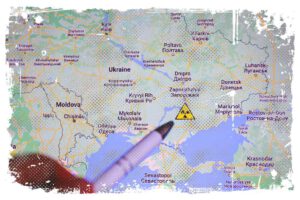The flag or coat of arms of the Greater Poland Voivodeship is a symbol of the region and its identity. It features a silver eagle on a red background, with a golden band on its wings, legs, and a golden scroll on its tail. The eagle design is based on the seal that was used by Przemysl II. The difference between these two is that on the flag, there is no crown on the eagle’s head. The Greater Poland coat of arms was officially adopted by the local assembly on January 31, 2000. Since that day, you can find it on various official documents and seals in the province.

Historical Coat of Arms of Wielkopolska vs. the Current One
The eagle has a long history as the symbol of Greater Poland. Wladyslaw Odonic (Greater Poland prince) used it on his seals in the early 13th century. This symbol originally represented the Piast family line rather than the region itself. However, after being revived at the beginning of the 15th century, the white eagle without a crown or headband in a red field has permanently remained the emblem of the land of Poznan.
Bufallo was Greater Poland’s First Emblem

The coat of arms of Greater Poland as a region was introduced in the 14th century under King Casimir III the Great. It features a crowned black buffalo head with a golden ring in its nostrils. It was also described as a bison head in a silver and red field. In most accounts from the 14th and 15th centuries, the buffalo is presented with a golden crown on its head. However, on the tombstone of King Wladyslaw II Jagiello, the coat of arms is depicted without a crown.
Later on, the provinces were established. The Poznan Land (also known as the Poznan Voivodeship) adopted the eagle as its emblem, while the buffalo became the emblem of the Kalisz Province (which is part of above mentioned Voivodeship)
The coat of arms of Greater Poland first appeared during the reign of King Casimir III the Great. It defined the territorial area of the Kingdom of Poland. It could be found in the following locations:
- Wislica Collegiate Church
- Parish church in Stopnica
- Sandomierz Cathedral
- Hetman’s Hall on the main square in Cracow
Since the reign of King Wladyslaw II Jagiello, coats of arms have been placed on all royal seals. The seals of the first three kings of Poland (from the Jagiellonian dynasty) feature a shield divided into four parts with a cross. Each of the parts has its own coat of arms: Poland, Lithuania, Greater Poland, and Kujawy.
What Does the Modern Greater Poland Flag Look Like?
The design of the coat of arms of the Greater Poland Voivodeship was determined by a resolution of the Sejmik of the Greater Poland Voivodeship on January 31, 2000. This resolution established the coat of arms and flag of the Greater Poland Voivodeship.

According to the resolution, the coat of arms of the voivodeship features a silver eagle on a red background, with a golden band on its wings, a beak facing right, golden legs, and a golden scroll on its tail. The eagle is placed on the triangular Gothic shield. The detailed rules for the construction of the coat of arms on a modular grid can be found in the documentation of the coat of arms of the Greater Poland region.
Where did the name „Greater Poland” (Wielkopolska) come from?
The name Greater Poland (in Polish, Wielkopolska) is derived from the historical region of Poland known as Polonia Maior. This region, located in the state’s central region, was named for its larger size and relative importance to other regions in the country. Some 20th-century historians have suggested that the term Wielkopolska may be an inaccurate translation of the Latin term „Polonia Maior”, which should be translated as „Old Poland” or „Older Poland”.
The distinctive features of Wielkopolska
The Greater Poland Voivodeship (province) is a region known for its diverse natural environment, economic development, and important historical monuments. It is home to the oldest city in Poland, Kalisz, as well as the first capital of Poland, Gniezno.
Is „Emblem” and „Coat of Arms” the Same Thing?
According to proper heraldic nomenclature, an „emblem” should be a part of a coat of arms, known in Polish as „herb”.For example, the national emblem (godło) of Poland is the White Eagle, while the same eagle placed on a red shield is the coat of arms (herb). The coat of arms is a more complete and formal way of identifying a country or region.
Bibliography
- https://pl.wikipedia.org/wiki/Herb_wojew%C3%B3dztwa_wielkopolskiego
- http://iw.org.pl/wp-content/uploads/2020/10/Herb-Wojew%C3%B3dztwa-Wielkopolskiego.pdf



